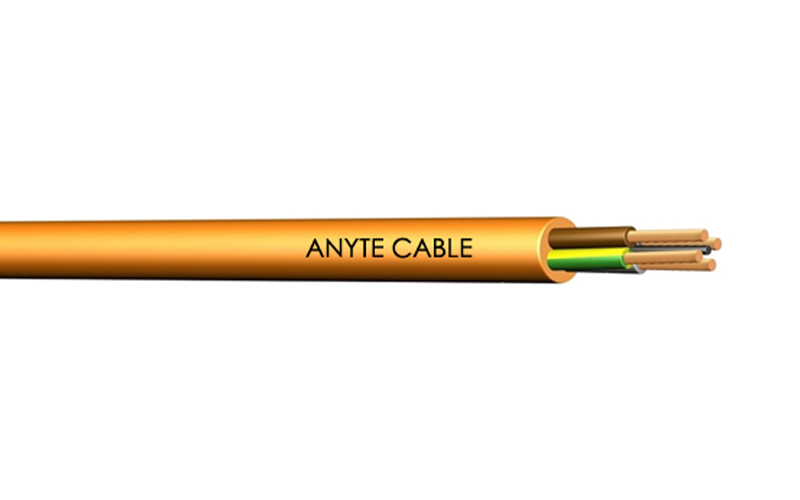NHXH cable is a cable widely used in various industrial, commercial and residential applications. It is known for its excellent electrical properties, durability and fire resistance, making it a popular choice for many different types of applications.
Cables consist of conductors that carry current and insulation that protects the conductors and prevents leakage of current. The conductors are usually made of copper or aluminum, both of which are highly conductive materials that allow the cable to transmit electricity efficiently. The insulation is made from a variety of materials including cross-linked polyethylene (XLPE), polyvinyl chloride (PVC) or ethylene propylene rubber (EPR), depending on the specific application requirements.
One of the main features of NHXH cables is their excellent electrical properties. The cable has low capacitance and high insulation resistance, meaning it can transmit power with minimal power loss. This makes it ideal for applications requiring high-performance cabling, such as industrial automation systems or data centers.
Characteristics of NHXH cables
NHXH cable is a halogen-free cable that complies with strict fire safety standards. It consists of a conductor that carries current and an insulating layer that protects the conductor and prevents leakage of current. Cables are known for their excellent electrical properties, including low capacitance and high insulation resistance. It also resists moisture, chemicals, and other environmental elements that can damage other types of cables. Most importantly, this Fire resistant cable has a halogen-free design, which means it won’t release toxic fumes when exposed to fire.
Application of NHXH cables
- Building Wiring: Typically used for building wiring, including power distribution, lighting, and control applications. It is especially useful in commercial and industrial buildings where safety regulations may require the use of halogen-free cables.
- Transportation Systems: Used in transportation systems, including trains, subways, and airplanes, where safety and reliability are critical. It is used in power distribution, signaling and communication applications.
- Data Centers: Used in data centers where it is important to maintain a high level of data integrity and prevent fire risks. It is used in power distribution, networking and communication applications.
- Oil and Gas Applications: Used in oil and gas applications where safety and reliability under harsh environmental conditions are important. It is used in power distribution, control and communication applications.
- Renewable Energy Applications: For renewable energy applications, including solar and wind power systems. It is used in power distribution, control and communication applications.

Types of NHXH cables
- NHXH-J: This cable has copper conductors and halogen-free insulation. It is designed for general purpose applications including power distribution and lighting.
- NHXH-LS: This type of cable is designed for applications where low smoke and toxicity are important, such as subways or aircraft. It has a halogen-free insulation and is known for its excellent fire performance.
- NHXH-CH: This type of cable is designed for applications where resistance to chemicals and oils is important. It has a halogen-free insulation and is commonly used in oil and gas applications.
- NHXH-LSH: This type of cable is designed for applications where low smoke, low toxicity and high flame resistance are important, such as high-rise buildings or data centers.
Which safety standards do NHXH cables meet?
NHXH cables are designed to meet stringent safety standards, especially those related to fire protection. Some of the most important safety standards that NHXH cables meet include:
- IEC 60332-1-2: This standard specifies the method for testing the flame propagation of a single cable under a small flame. NHXH cables meet the requirements of this standard for flame propagation resistance.
- IEC 60332-3-22: This standard specifies the method for testing the flame spread of bundled cables installed vertically. NHXH cables meet the requirements of this standard for flame spread resistance.
- IEC 60754-1: This standard specifies the method for testing the acidity of gases released during the combustion of electrical cables. NHXH cables comply with the standard’s requirements for low acidity gases released during combustion.
- IEC 60754-2: This standard specifies the method for testing the amount of halogen acid gas released during the burning of cables. NHXH cables meet the standard’s requirements for low concentrations of halogen acid gases released during combustion.
- IEC 61034-1: This standard specifies the test method for the smoke emission during the burning process of cables. NHXH cables meet the requirements of this standard for low concentrations of smoke produced during combustion.
- EN 50267-2-1: This standard specifies the method for testing the acidity of gases released during the combustion of electrical cables. NHXH cables comply with the standard’s requirements for low acidity gases released during combustion.
- EN 50267-2-2: This standard specifies the method for measuring the amount of halogen acid gas released during the combustion of cables. NHXH cables meet the standard’s requirements for low concentrations of halogen acid gases released during combustion.
By meeting these safety standards, NHXH cables are able to provide a high level of safety and reliability in a variety of applications where fire resistance is critical. It is important to ensure that NHXH cables are properly installed and maintained to ensure that they continue to meet these safety standards throughout their useful life.
In conclusion
NHXH cable is a versatile and reliable cable used in a wide range of applications where safety and reliability are critical. It is known for its excellent electrical properties, durability and fire resistance. When selecting a cable for a particular application, it is important to consider the different types available and their specific properties.
Anyte Cable not only develops and manufactures standard high-quality cables, but also provides excellent solutions according to your needs and product applications. Welcome your inquiry at any time.
Related Products

CE NHXH




